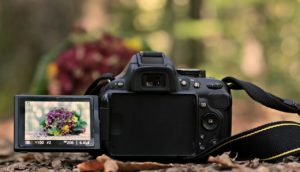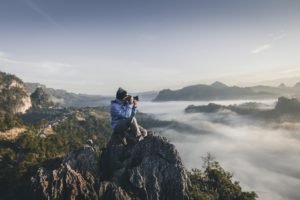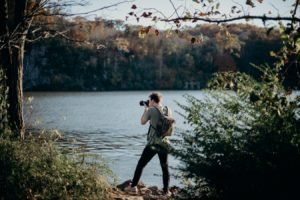It seems a simple concept: make sure the thing you’re taking a photo of is sharp. But there is much more to the simple act of focusing on your subject. Used selectively, focus is a great tool for getting your message across within an image.
Story telling
Whether you are taking snaps of your kids at the beach, or on a professional assignment photographing African tribes for a magazine, you are telling a story with your photos. Knowing what the story is before you start shooting helps you choose what to photograph and how. For example, if you want to tell the story about your kid’s day at the beach you might choose to focus on the smiles on their faces, the sandcastles they build, or the ice creams they manage to get all over their faces. Or you might decide to tell the story of the beach itself. The white sands, the beach huts nearby or the boats on the water. In either case you will come away with very different images. Remember the saying think before you speak? Well this is the visual equivalent.
Focal length
Ok, so we’ve decided on what story to tell. But what does this have to do with focusing? It’s about taking your story and making it stand out from all that is going on around it. Let’s say that you have decided to make a record of your kids first day at the beach and there are lots of opportunities for close ups of smiling faces. The way to make those faces stand out from the background is to use a short focal length, or wide aperture. Focusing on your child’s face and using a short focal length will blur the background, making your child and their joy the story. An example of long focal lengths in story telling is if you have decided your intention is to show the beach itself and the area surrounding, you might use a long focal length to describe the length of the beach, or how busy the beach was by showing acres of people sunning themselves on the sand. In short, a shorter focal length is most useful for a single narrative while a longer focal length lends well to telling a broader story, or giving a wider picture.
Avoiding confusion
Knowing what you want to say before you say it, or thinking before you speak, avoids jumbling your words. Similarly, knowing what your story is before you start taking pictures also avoids confusion. Having intention in your images leaves the viewer in no doubt over what the photo is actually of. Ever seen those pictures people take of their day at the beach where there was so much going on in a photo that you couldn’t tell what it was about? Then they point out that it is actually a picture of their child whose head you could just see in the bottom right hand corner. This is what I call a confusing photograph, and is to be avoided at all costs. Keep it simple. If you want to take a photo of your child, make them prominent in the shot and make them stand out using focal length.
Submitted by:Mark EdenMark Eden is a freelance travel photographer and owner of Expanse Photography, a photographic services company You can see Mark’s, travel photography and contact Mark through the Expanse Photography website http://www.expansephotography.com. |







